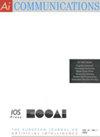结合质量度量的自适应阈值步态认证
IF 1
4区 计算机科学
Q4 COMPUTER SCIENCE, ARTIFICIAL INTELLIGENCE
引用次数: 0
摘要
本文提出了一种基于自适应阈值的步态认证模型,该模型将距离域中的质量度量纳入到梯度域中,以实现每个步态样本的最优阈值,而不是像大多数认证模型那样使用固定阈值。为了获取每个步态的质量度量,提出了一种步态协变量不变生成对抗网络(GCI-GAN),在保持受试者身份的同时,不考虑协变量(携带和观看条件)生成正常步态(规范条件)。特别地,GCI-GAN连接梯度加权类激活映射(Grad-CAMs),从输入特征的重要成分中获得注意掩模,使用混合操作来操纵输入的特定区域,最后使用多重损失来约束生成样本的质量。我们在CASIA-B和OU-ISIR的步态数据集上验证了该方法,并显示出与其他最先进的技术相比,认证率大幅提高。本文章由计算机程序翻译,如有差异,请以英文原文为准。
An adaptive threshold based gait authentication by incorporating quality measures
In this paper, an adaptive threshold-based gait authentication model is proposed, which incorporates the quality measure in the distance domain and maps them into the gradient domain to realize the optimal threshold of each gait sample, in contrast to the fixed threshold, as most of the authentication model utilizes. For accessing the quality measure of each gait, a gait covariate invariant generative adversarial network (GCI-GAN) is proposed to generate normal gait (canonical condition) irrespective of covariates (carrying, and viewing conditions) while preserving the subject identity. In particular, GCI-GAN connects to gradient weighted class activation mapping (Grad-CAMs) to obtain an attention mask from the significant components of input features, employs blending operation to manipulate specific regions of the input, and finally, multiple losses are employed to constrain the quality of generated samples. We validate the approach on gait datasets of CASIA-B and OU-ISIR and show a substantial increase in authentication rate over other state-of-the-art techniques.
求助全文
通过发布文献求助,成功后即可免费获取论文全文。
去求助
来源期刊

AI Communications
工程技术-计算机:人工智能
CiteScore
2.30
自引率
12.50%
发文量
34
审稿时长
4.5 months
期刊介绍:
AI Communications is a journal on artificial intelligence (AI) which has a close relationship to EurAI (European Association for Artificial Intelligence, formerly ECCAI). It covers the whole AI community: Scientific institutions as well as commercial and industrial companies.
AI Communications aims to enhance contacts and information exchange between AI researchers and developers, and to provide supranational information to those concerned with AI and advanced information processing. AI Communications publishes refereed articles concerning scientific and technical AI procedures, provided they are of sufficient interest to a large readership of both scientific and practical background. In addition it contains high-level background material, both at the technical level as well as the level of opinions, policies and news.
 求助内容:
求助内容: 应助结果提醒方式:
应助结果提醒方式:


